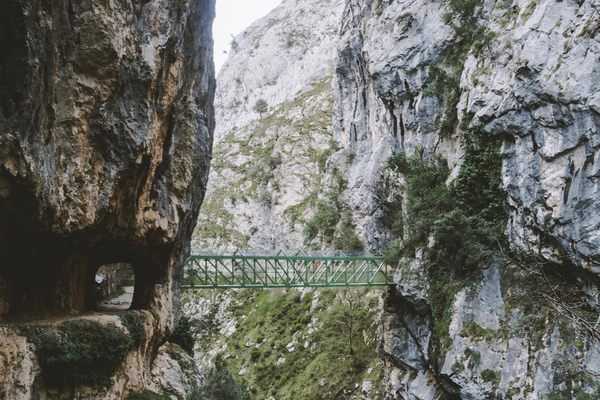Cantabrian Chamois of Asturias
These ungulates have quite literally bounced back from the brink of extinction.
Upon first seeing the strange chamois in its mountain haunts, you could be forgiven for thinking that this elegant critter resembles more an antelope from some distant African savanna than a European species. The chamois, however, is both a relative of antelopes and a native European species, and its continued survival is a living testament to both the tenacious resilience of nature and the successful efforts of conservationists.
The chamois is a species of the wild goat-antelope family that’s native to several European mountain ranges. The Spanish population of chamois belong to the Pyrenean subspecies and can be found in the mountain ranges that sprawl across the regions of Asturias, León, Cantabria, and the Basque country.
Adult chamois are a vital prey animal for apex predators such as the Iberian wolf and Cantabrian brown bear, while infants become a staple part of the golden eagle’s diet. However, its greatest threat is humans. Since prehistory, the chamois has always been the target of subsistence and recreational hunting. But it was not until the 19th century that hunting began to really take its toll on wild populations.
Commercial demand for the animal’s skin spurred overhunting in the 19th and 20th centuries. The chamois has a very soft pelt and porous skin cells, which have great elasticity. When tanned in cod liver oil and made into leather, it becomes a material that is highly absorbent and non-abrasive. These qualities made the skin a highly sought after commodity for items such as leather jackets, gloves, bags, polishing cloths, and even cycling shorts.
As a result of this overexploitation, this wild goat almost became extinct in the Alps, Abruzzo, and Cantabrian mountain ranges by the 1940s. Conservation measures were introduced—largely out of necessity to secure the future of the chamois leather market—and hunting restrictions were put in place. The development of alternatives made from the leather of domestic animals such as sheep and goats and the later production of synthetic alternatives also helped allow its populations to recover.
Know Before You Go
The best place to see wild chamois in Asturias is in the Picos de Europa National Park, but they may also be seen in the mountains of Cangas de Navacea and Somiedo National Park. To see them, visit the national parks in the late morning, bring binoculars, and scan the rocky crags and gorges.
Community Contributors
Added by
Edited by
Plan Your Trip
The Atlas Obscura Podcast is Back!





















Follow us on Twitter to get the latest on the world's hidden wonders.
Like us on Facebook to get the latest on the world's hidden wonders.
Follow us on Twitter Like us on Facebook